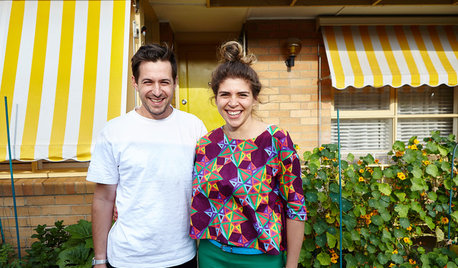What you need to know to win Queen of show.
henry_kuska
19 years ago
Related Stories

DECORATING GUIDESItalian Campaign Beds Show Winning Design
Add style and structure to a room with this perennial design darling, a throwback to the days of military furniture on the move
Full Story
GARDENING GUIDESGreat Outdoor Living Ideas From the 2015 Chelsea Flower Show
The London garden exhibition has winning design concepts to borrow for your own backyard spaces
Full Story
LIFEHouzz Call: Show Us Your Nutty Home Fixes
If you've masterminded a solution — silly or ingenious — to a home issue, we want to know
Full Story
WALL TREATMENTSLet Graphic Wallpaper Win You Over
Squiggles, zigzags, zebra stripes and paisleys: There’s a boldly patterned wallpaper print for every taste and design scheme
Full Story
SMALL HOMESMicrounits Are Coming to NYC. See the Winning Design
Say goodbye to only arm-and-a-leg Manhattan rents. This plan for small prefab units opens the door to more affordable housing
Full Story
HOMES AROUND THE WORLDMy Houzz: A DIY Queen’s Sweet Suburban Dream
A resourceful Australian homeowner shares her tips and tricks for a colorful and creative living space
Full Story
ARTSee Winning Modern Quilts on Display at QuiltCon 2015
Top quilts have been chosen from among hundreds at the international show in Austin through February 22. View them and others here
Full Story
BATHROOM DESIGN3 Award-Winning Bathrooms From 2013 KBIS to Judge for Yourself
See if you agree with the Kitchen and Bath Industry Show judges on these glam, nature-loving and girly bathroom designs
Full Story
KITCHEN DESIGN9 Award-Winning Kitchens from KBIS 2013 to Drool Over
See top-rated designs from this year's Kitchen and Bath Industry Show and get details about the designers' visions
Full Story
GARDENING GUIDES5 Ways to Naturally Win the Weed War
Show irksome weeds no mercy with these tricks for combating them sans chemicals
Full StorySponsored






henry_kuskaOriginal Author
ron_gregory
Related Professionals
Ilchester Landscape Architects & Landscape Designers · Battle Ground Landscape Contractors · Burien Landscape Contractors · Fort Payne Landscape Contractors · Hurricane Landscape Contractors · Mastic Beach Landscape Contractors · New Brighton Landscape Contractors · North Hills Landscape Contractors · Hamden Siding & Exteriors · Silver Spring Siding & Exteriors · Brookfield Decks, Patios & Outdoor Enclosures · Palm Beach Gardens Decks, Patios & Outdoor Enclosures · Pittsburgh Decks, Patios & Outdoor Enclosures · St. Louis Decks, Patios & Outdoor Enclosures · Decks, Patios & Outdoor Enclosureshenry_kuskaOriginal Author
kitty
henry_kuskaOriginal Author
richard
ron_gregory
cactusjoe1
ken_se_fl
suzanne_ladyred
hershigrl